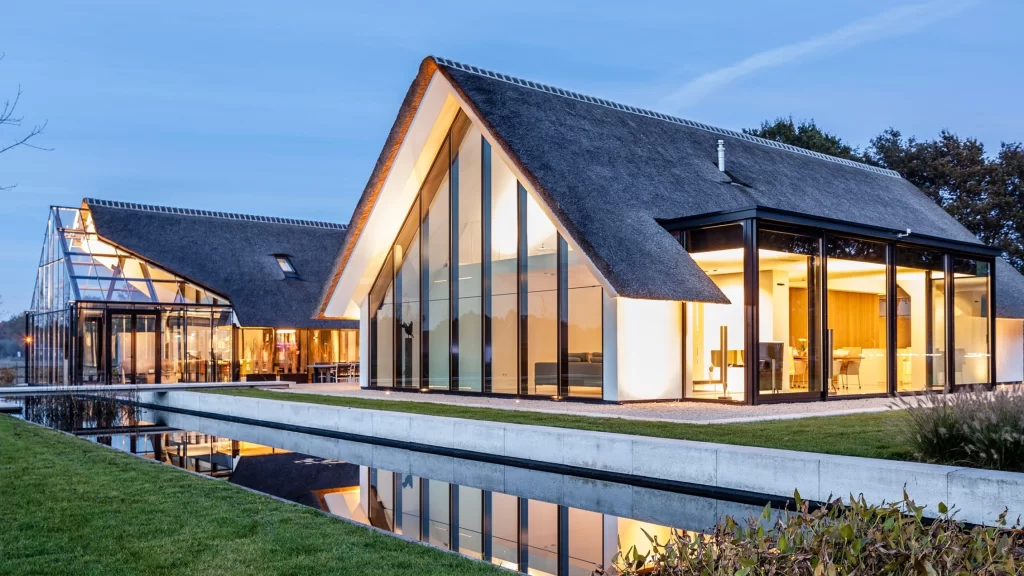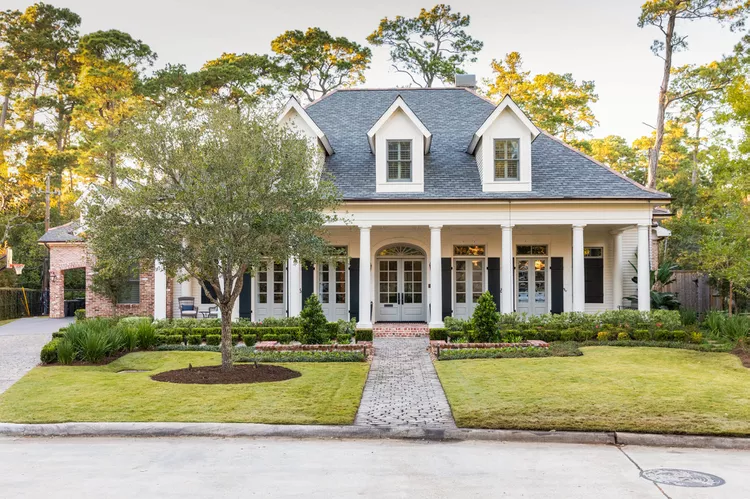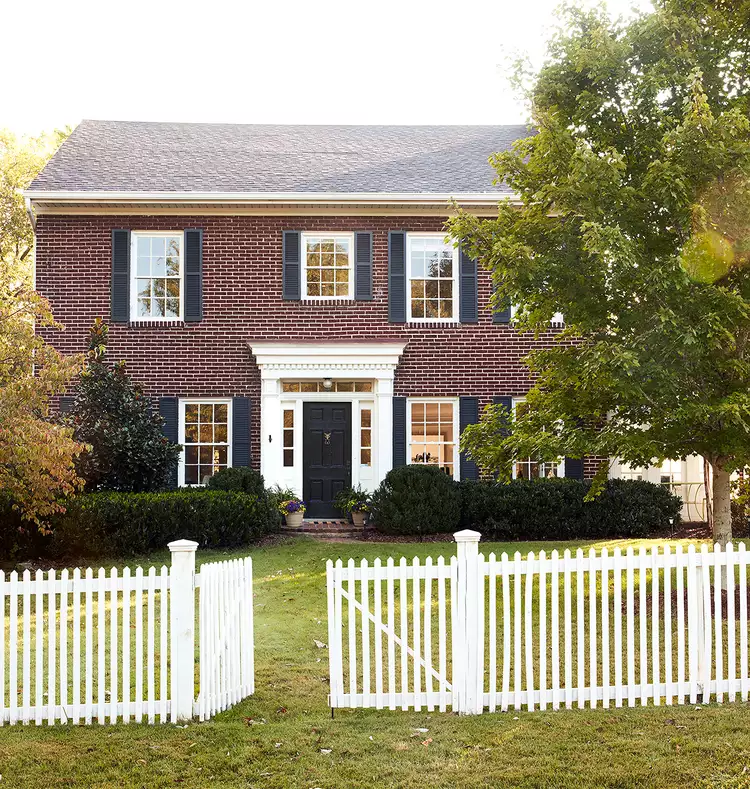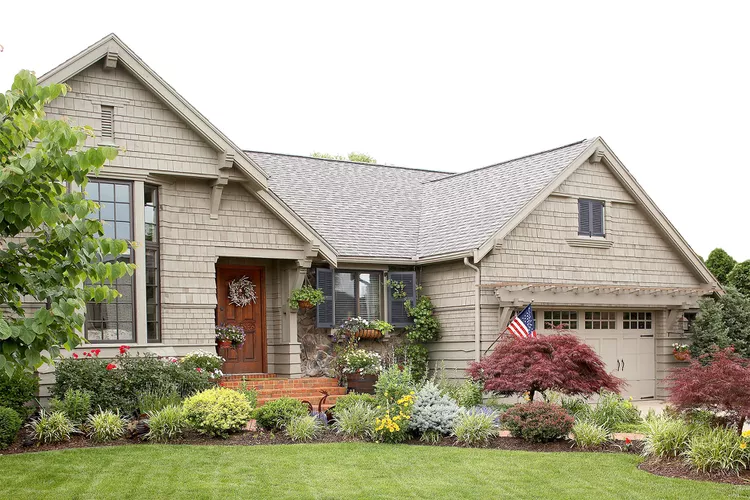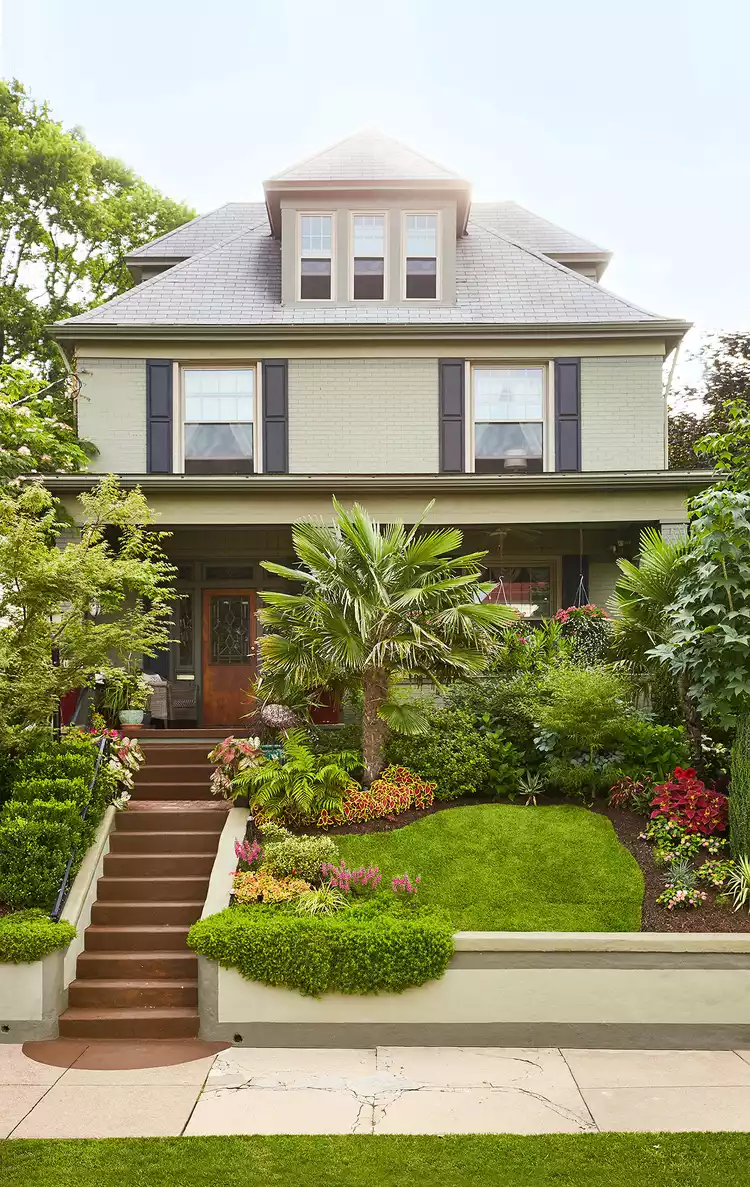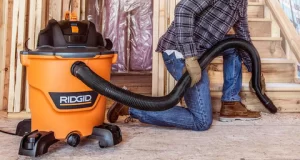A dormer is a distinctive architectural feature, typically a window that protrudes outward from the sloped side of a roof. This projection is crowned with its own roof, which can take various shapes, including pitched, arched, or flat. The incorporation of dormer windows into a roof design serves both functional and aesthetic purposes.
By introducing dormers, natural light and airflow can permeate the upper areas of a home, contributing to a brighter and well-ventilated interior. Beyond their practical benefits, dormers also play a crucial role in enhancing the visual appeal of the roofline, adding interest, and imparting dimension to the overall architectural composition. Whether creating a charming attic space, increasing headroom, or simply elevating the exterior aesthetics, dormers are a versatile and stylish addition to roof designs, seamlessly blending form and function in residential architecture.
5.Gambrel Roof Style
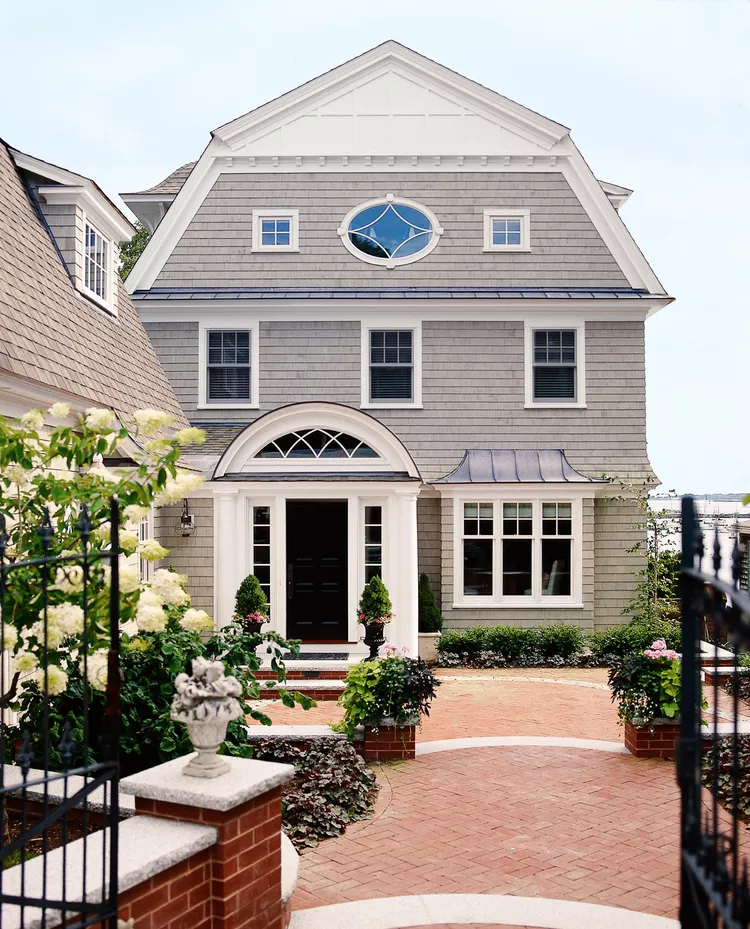
Gambrel roofs exhibit a distinctive design, featuring symmetrical slopes on two sides—initially at a gentle angle and then transitioning to a much steeper slope. This roof style is a characteristic element of Dutch Colonial homes, farmhouses, and exterior structures like barns and sheds. The appearance of a gambrel roof can evoke different atmospheres, ranging from rustic to elegant, depending on the overall architectural context.
The gradual and then steep slopes of the gambrel roof contribute to its versatility in various settings. It not only provides functional benefits such as increased headroom or storage space but also plays a key role in defining the visual character of a structure. Whether gracing the silhouette of a charming farmhouse or accentuating the practicality of a barn, the gambrel roof stands as an architectural feature that seamlessly blends utility with aesthetic appeal, adding a touch of character to diverse architectural styles.
6.Mansard Roof Style
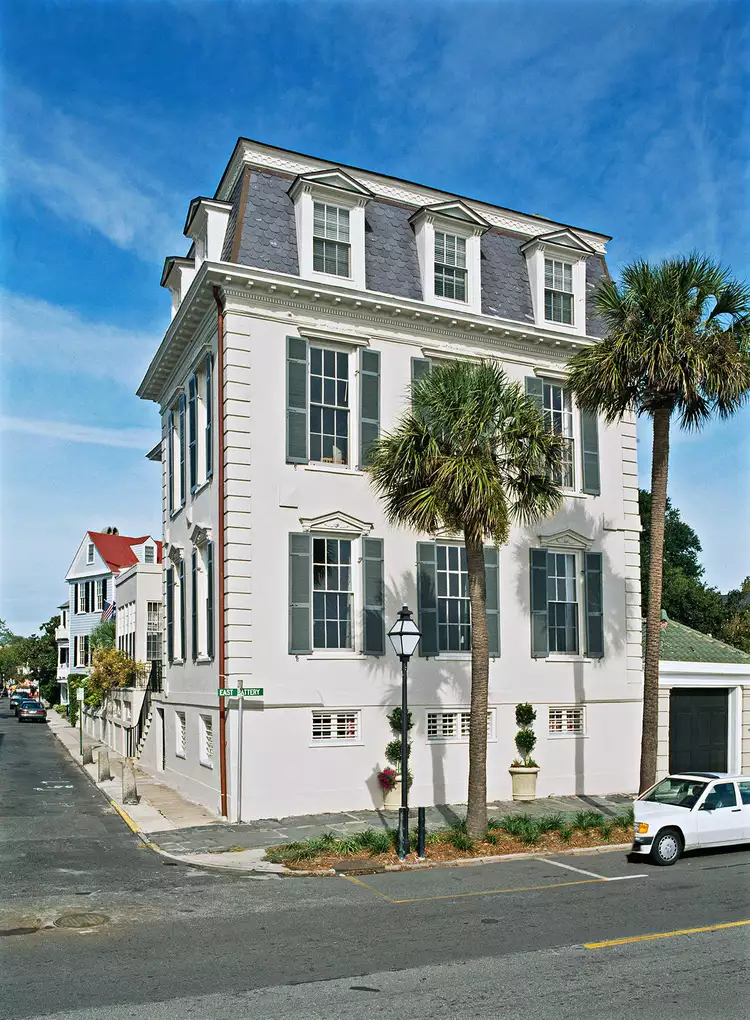
The mansard roof, with its four double-sloped sides converging to form a flat area or low-pitched ridge in the middle, has been a popular choice in European architecture for centuries. This unique roof style often incorporates dormers into the lower slope, allowing for increased natural light. The elegant home in question, originally built in the Federal style, retained many of its post-Civil War improvements, including the distinctive mansard roof.
The mansard roof on this home contributes to its timeless charm and architectural interest. Adorned with purple-gray scalloped shingles, the roof complements the decorative ornamentation of the house. This combination of a mansard roof with intricate shingle details showcases a thoughtful blend of functionality and aesthetics, creating an enduring and visually appealing feature that has stood the test of time.
7.Flat Roof Styles
Flat roofs are a common sight on contemporary-style homes, often concealed from view from the street. These roofs demand robust materials due to their horizontal orientation. Although aesthetics might not be the primary consideration, ensuring efficient water drainage from the slight slope becomes crucial. In regions with cold climates, selecting a roofing material capable of withstanding a substantial snow load is imperative.
While flat roofs may not be as visually prominent, their design necessitates careful planning to address both functional and climate-specific concerns. The emphasis on durability and water management underscores the importance of selecting appropriate roofing materials for flat roofs, ensuring their resilience against the elements and contributing to the overall longevity of the structure.
8.Dutch Colonial Roof Design
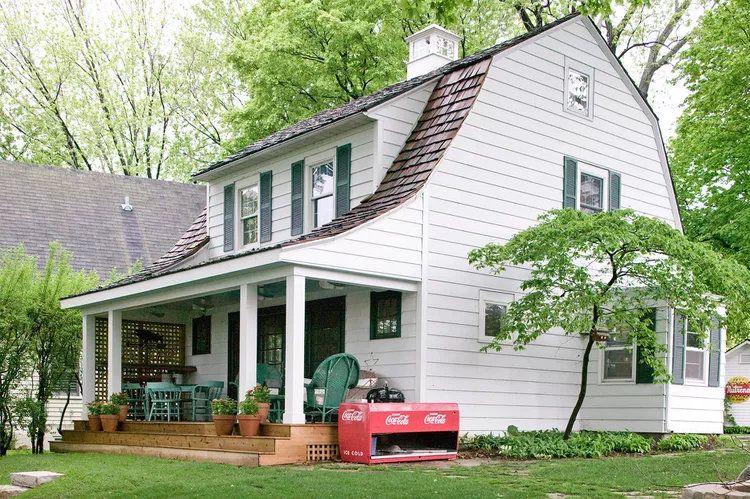
Gambrel roofs, featuring steeply sloped sides, are a distinctive characteristic of Dutch Colonial houses. This roof style typically extends over a significant portion of two exterior sides of a home’s second floor, making roofing material and color choices highly visible from the curb. While wood shingles and shakes are beautiful natural options, it’s essential to check for fire-retardant treatments for these materials.
For those seeking a balance between aesthetics and safety, synthetic substitutes like laminated composition shingles offer a viable alternative. These shingles mimic the appearance of traditional shakes while providing fire-resistant properties. Choosing the right roofing material not only enhances the visual appeal of a Dutch Colonial home but also addresses practical considerations, ensuring a harmonious blend of style and functionality.
9.Skillion Roof Style
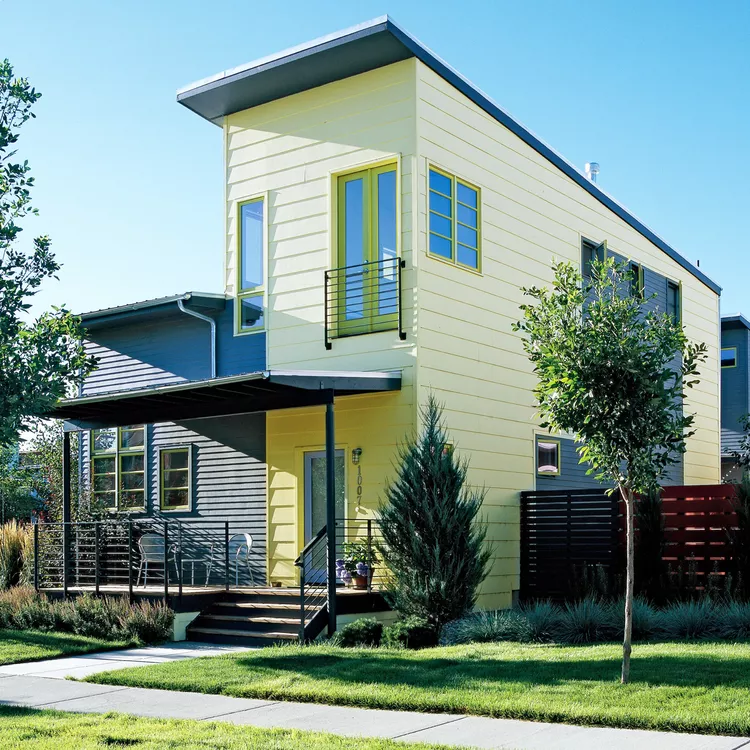
A skillion roof, also known as a lean-to, is characterized by its sloping in only one direction, creating a roof shape with striking angles. This distinctive style can be applied to specific sections of a roof or extend across an entire home, resulting in a bold and contemporary exterior appearance. Skillion roofs sometimes incorporate various angles across different sections, adding a dynamic and visually intriguing element to the overall design.
The skillion roof’s steep pitch makes it well-suited for regions experiencing heavy rain or snowfall, as the design facilitates efficient runoff. Beyond its functional advantages, the skillion roof serves as a key architectural feature, contributing to a modern and eye-catching aesthetic. Whether applied selectively or spanning the entire structure, the skillion roof offers a versatile and stylish option for those seeking a distinctive and contemporary look for their homes.
10.Clay Tile Roof
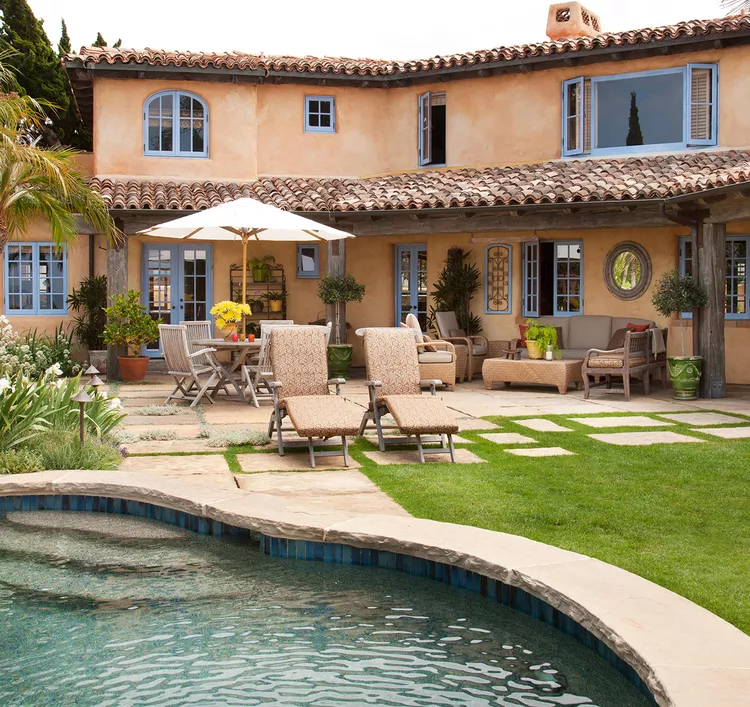
Tile roofs, distinguished by their bold color and texture, draw attention and are frequently employed on Spanish or Mediterranean-style homes. Particularly popular in the Southwest, clay tiles are chosen for their ability to deflect the hot sun, contributing to the cooling of the interior. While tile roofs can be a costly investment, their longevity is a notable feature.
In the context of the featured home with a stucco exterior, the warm color scheme and textures of the tile roof create a harmonious and visually appealing combination. This showcases the thoughtful integration of roofing materials with architectural elements, resulting in a cohesive and aesthetically pleasing home exterior. The use of tile roofs extends beyond their functional benefits to become a defining visual element that enhances the overall character and charm of the residence.
11.Metal Roof Styles
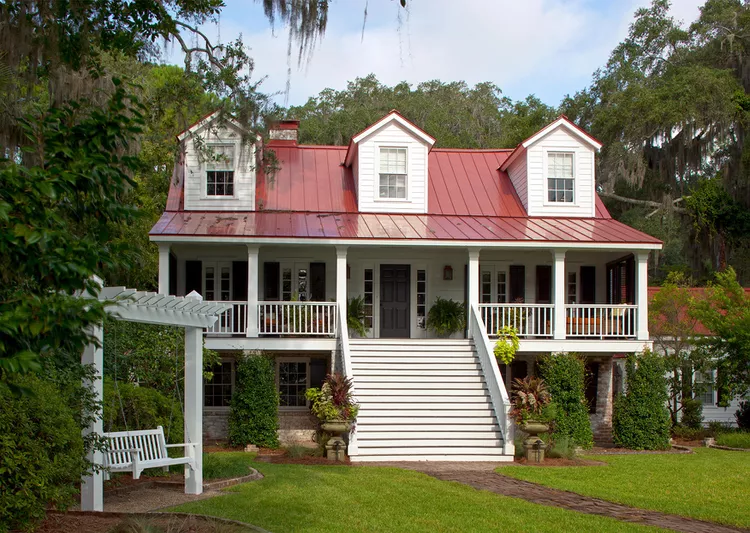
Metal roofing, crafted from materials such as aluminum, steel, or copper, presents a durable, lightweight, and fire-resistant option. However, it’s essential to consider that metal roofs conduct heat and can generate noise. In the case of the featured three-story clapboard cottage, the metal roof serves as a dramatic enhancement to the overall design.
The bold red hue of the metal roof contributes to an eye-catching color palette when paired with the all-white exterior and the surrounding greenery. This deliberate use of color creates a striking visual impact, showcasing the metal roof as not only a functional component but also a key element in the home’s aesthetic composition. The juxtaposition of vibrant colors against a neutral backdrop highlights the versatility of metal roofing as both a practical and visually impactful choice in residential architecture.
12.Slate Roof Materials
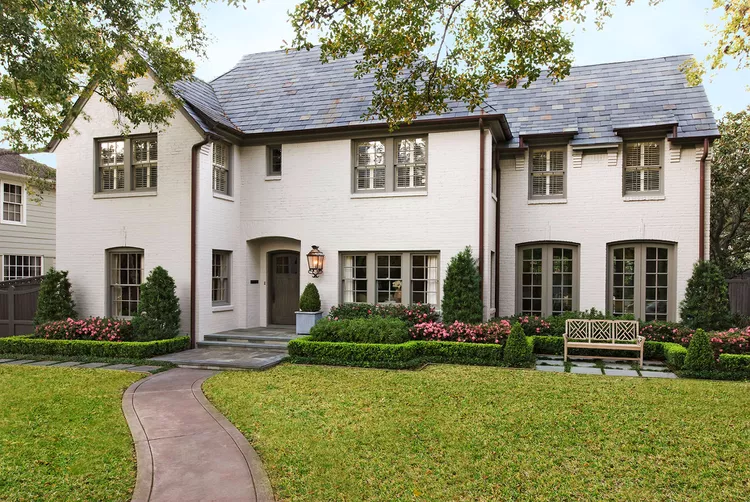
Slate stands out as an elegant and visually appealing roofing material that complements homes of various styles. However, the installation and maintenance costs associated with natural slate can be substantial. For those who appreciate the aesthetic of slate roofs but seek a more budget-friendly alternative, composite materials provide a solution.
Constructed from a blend of slate and resins, composite roofing materials emulate the appearance of natural slate while offering advantages such as easier installation and maintenance. This alternative allows homeowners to achieve the sophisticated and timeless look of slate without the financial and practical considerations associated with traditional slate roofs. The integration of composite materials showcases how advancements in roofing technology can provide cost-effective alternatives that retain the charm and visual appeal of premium roofing materials.
13.Combining Different Types of Roofs
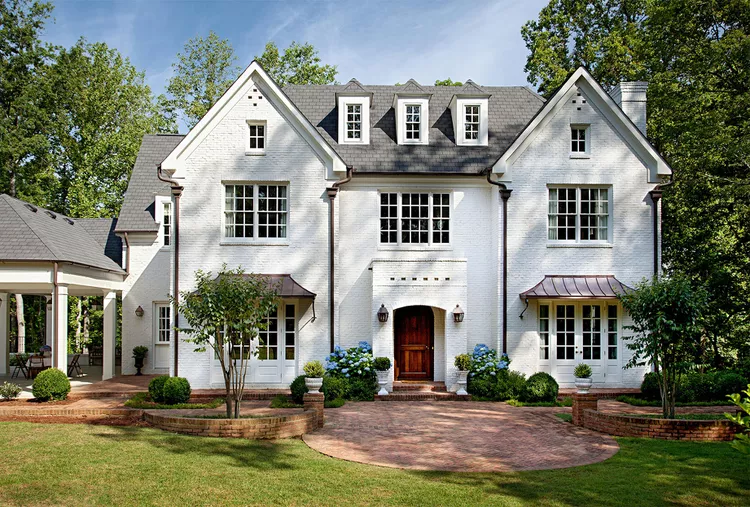
Numerous homes exhibit a blend of different roof styles within a single structure, enhancing visual interest and architectural complexity. The featured Tudor-inspired house exemplifies this approach by combining dormer and gable roof designs. The outer areas of the roof are defined by two cross cables, contributing to the overall Tudor aesthetic.
To break up the blank spaces and infuse more light into the interior, the central portion of the roof incorporates three dormer windows. This thoughtful integration of roof styles not only adds architectural intrigue but also serves functional purposes. The use of copper window awnings and a wooden entry door further enhances the exterior charm, showcasing how the combination of various roofing elements contributes to the overall character and appeal of the home.
14.Mixing Roof Materials
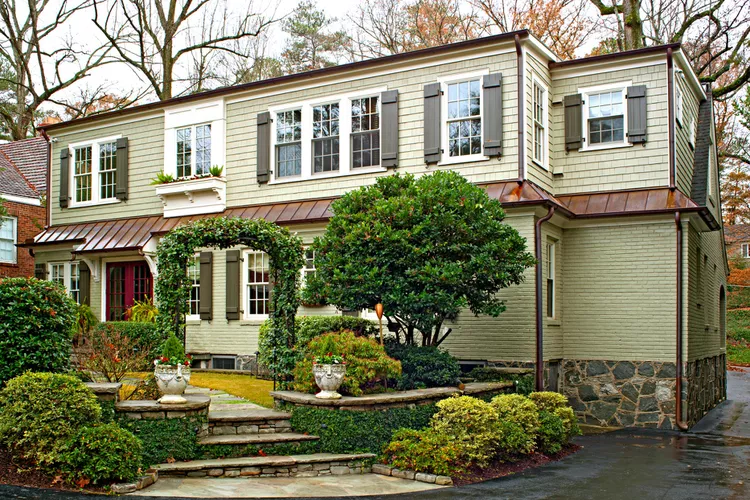
Innovative roofing choices can contribute to the overall character and energy efficiency of a house, especially when the roof’s design undergoes changes. The upper-level addition of this home features white PVC roofing, a material known for its energy-saving properties. This choice not only serves a functional purpose but also adds a modern touch to the architectural composition.
The use of white PVC roofing is strategically implemented on the new addition, creating a subtle and cohesive aesthetic that is only visible from a bird’s-eye view. In contrast, the lower section of the house retains its original character with the incorporation of metal roofing. This thoughtful combination of roofing materials not only addresses practical considerations but also adds a layer of visual interest, showcasing how varied roofing materials can coexist harmoniously to enhance a home’s overall design.
15.Roof Design Updates
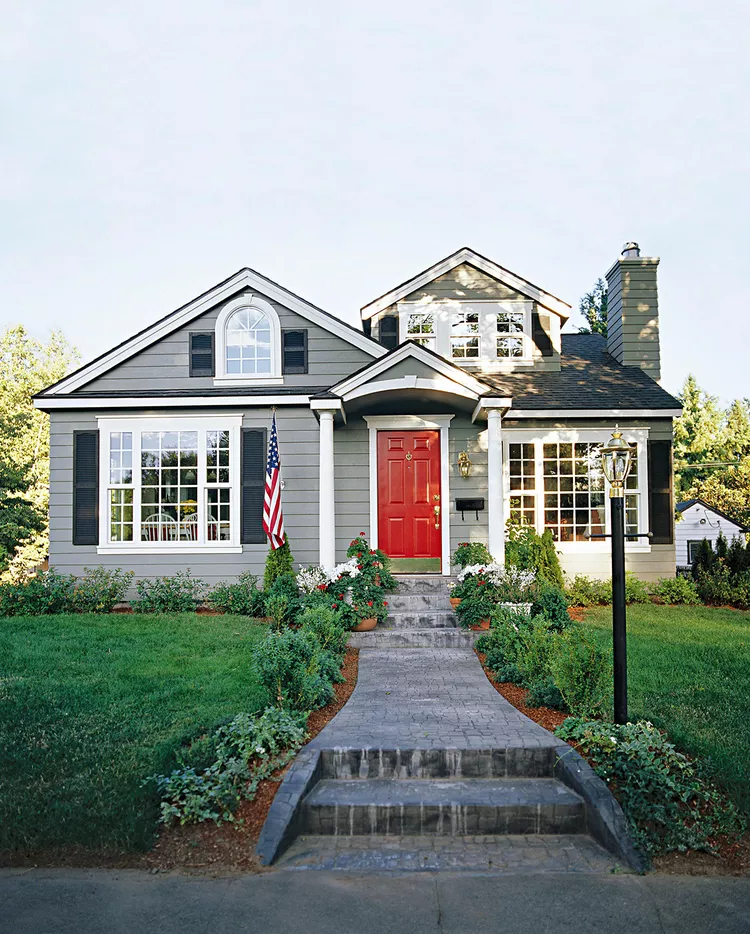
Opting for a complete tear-off when updating a roof is generally recommended, as it allows for a thorough assessment of the roof deck’s condition and facilitates the correction of any underlying defects before the installation of a new roof. In the case of this home, the aging roof underwent a transformation, transitioning to a slate-style fiberglass-composite shingle.
The choice of a slate-style shingle not only modernizes the roof but also complements the home’s updated gray-blue exterior color. This approach not only addresses structural considerations but also incorporates aesthetic enhancements, illustrating how a comprehensive roof update can contribute to both the longevity and visual appeal of a home.
Conclusion
Roofing plays a pivotal role in a home’s aesthetics, structural integrity, and energy efficiency. The diverse range of roof styles and materials allows homeowners to make choices that align with their preferences, climate considerations, and architectural goals.
From classic gable and hip roofs to the more unique gambrel, mansard, and skillion designs, each roof type brings its own character to a home. The selection of roofing materials further contributes to the overall functionality and appearance, whether it’s the durability of metal, the elegance of slate, or the energy efficiency of PVC.
Understanding the importance of proper roof installation, including the benefits of tear-offs for thorough assessments, ensures the longevity and reliability of a new roof. Thoughtful combinations of roofing materials can enhance a home’s visual interest and energy efficiency while addressing practical considerations.
Ultimately, the choice of roofing is a blend of functionality, aesthetics, and regional considerations. As homeowners embark on roof updates or new constructions, thoughtful decisions regarding roof styles and materials can elevate a home’s curb appeal, structural integrity, and overall comfort.
